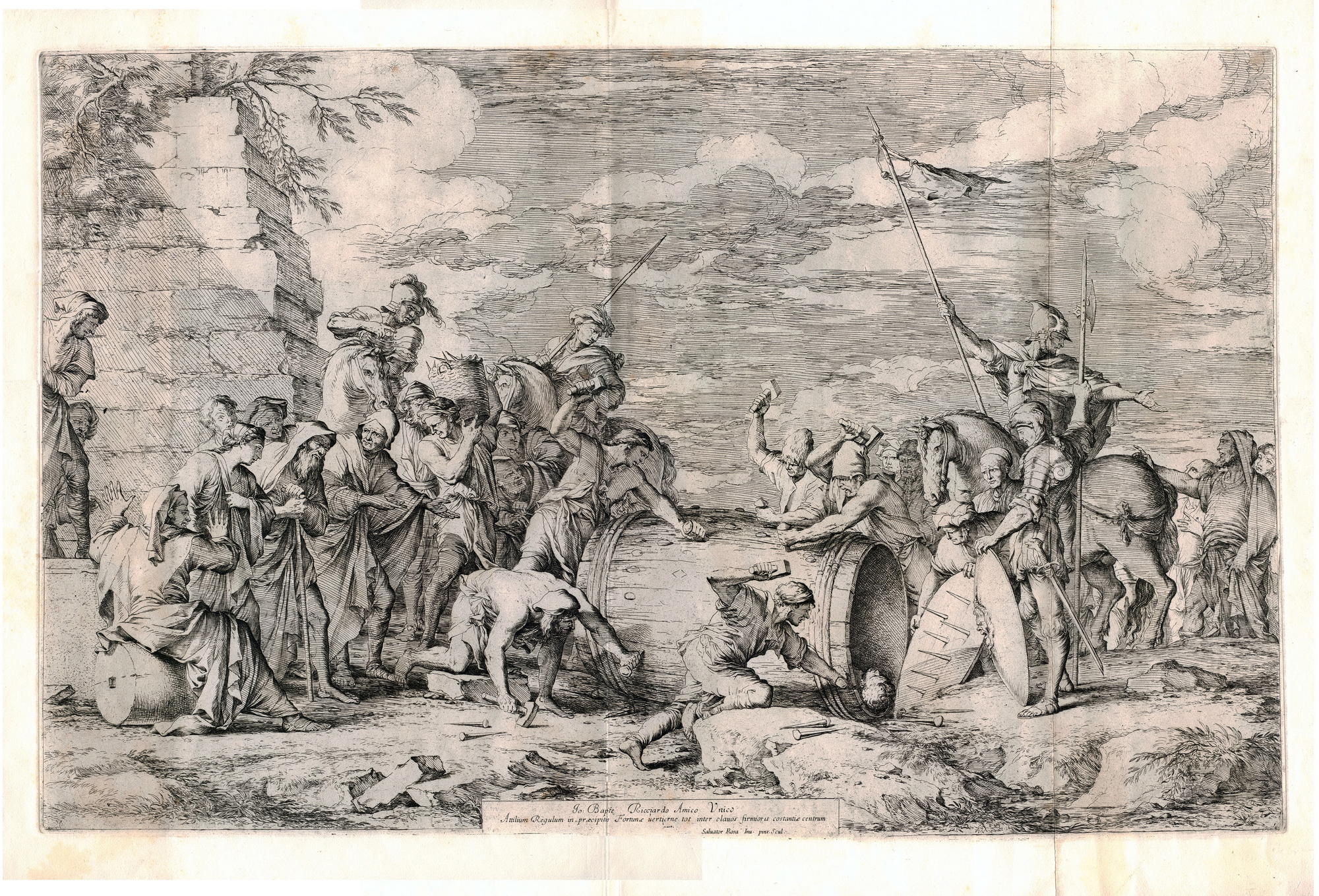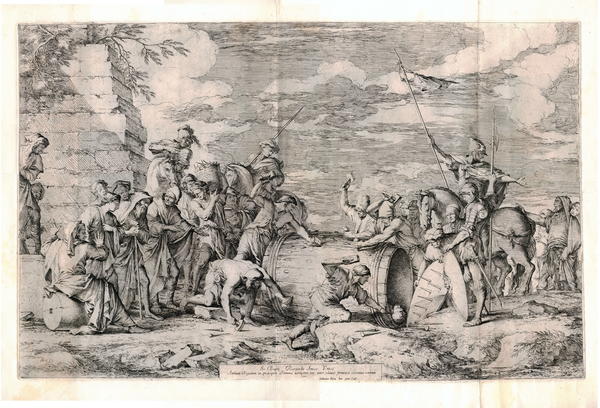The Italian artist Salvator Rosa made the engraving The Death of Marcus Atilius Regulus on the basis of his own original painting that is kept in Virginia Museum of Fine Arts in the USA.
1 / 2
The Death of Marcus Atilius Regulus
Время создания
ca. 1662
Размер
85,3x59,3 cm
sheet: 85.3x59.3 cm; image: 73.4x46.8 cm
sheet: 85.3x59.3 cm; image: 73.4x46.8 cm
Техника
watermarked paper, impression, engraving
Коллекция
0
Открыть в приложении#3
Salvator Rosa
The Death of Marcus Atilius Regulus
#2
#6
The engraving shows the death of Marcus Atilius Regulus, a military and political leader of the Roman Republic. In 256 B.C., Regulus was for the second time appointed a Roman Consul and was sent to Africa together with Lucius Libo. Having defeated the Carthaginian feet, having captured 40 thousand of prisoners of war and having seized a small town, they have gained a foothold on the seashore. The Carthaginians started panicking, while the Romans began to plunder the location. The engraving shows the death of Marcus Atilius Regulus, a military and political leader of the Roman Republic. In 256 B.C., Regulus was for the second time appointed a Roman Consul and was sent to Africa together with Lucius Libo. Having defeated the Carthaginian feet, having captured 40 thousand of prisoners of war and having seized a small town, they have gained a foothold on the seashore. The Carthaginians started panicking, while the Romans began to plunder the location.
Soon the Senate withdrew Libo and his army from Carthage. Marcus Atilius Regulus was left alone to complete the campaign. In the battle at Adys he hammered the enemy, but the Carthaginians preferred to continue the war. While Regulus failed to continue the fight, the Carthaginians managed to restore the army and gain the service of general Xanthippus of Sparta origin. In the spring of 255 B.C., Regulus finally engaged with the enemy. Most part of the Roman army was crushed by the Numidian cavalry and battle elephants, and Marcus Atilius Regulus was taken prisoner. He spent five years in the Carthaginian prison and died there.
Accounts of his death are not historically documented. According to one of the legends, Regulus was sent by Carthage to Rome as part of the embassy to strike peace and bring home noble prisoners. Upon arrival to the Eternal City, Regulus convinced the Senate to continue the war with Carthage and retain the prisoners. Being oath-bound to the enemies, he returned to Carthage and was executed: Regulus was put in a barrel, spiked on the inside, and he died of pain, bleeding and impossibility to get any sleep.
#8
The subject of the heroic deed and awful death of the Roman general was popular in the Middle Ages, but really flourished during the period of Renaissance. Salvator Rosa had his own vision of that episode. The composition of his engraving is symmetric and balanced. The main character, Romulus, is practically invisible, having already been placed in the barrel, however, emotional and dramatic tension is represented through figures, movements and postures of his torturers.
Rosa painted his original painting of The Death of Marcus Atilius Regulus in 1650-1652; in 1651 he created the chiaroscuro, i.e. the color lithograph, while the etching, that he dedicated to his friend Giovanni Battista Riccardi, was made around 1662.
Rosa painted his original painting of The Death of Marcus Atilius Regulus in 1650-1652; in 1651 he created the chiaroscuro, i.e. the color lithograph, while the etching, that he dedicated to his friend Giovanni Battista Riccardi, was made around 1662.
#9
Irbit State Museum of Fine Arts
читать дальшескрыть
00:00
00:00
1x
The Death of Marcus Atilius Regulus
Время создания
ca. 1662
Размер
85,3x59,3 cm
sheet: 85.3x59.3 cm; image: 73.4x46.8 cm
sheet: 85.3x59.3 cm; image: 73.4x46.8 cm
Техника
watermarked paper, impression, engraving
Коллекция
0
Открыть в приложении
Поделиться






